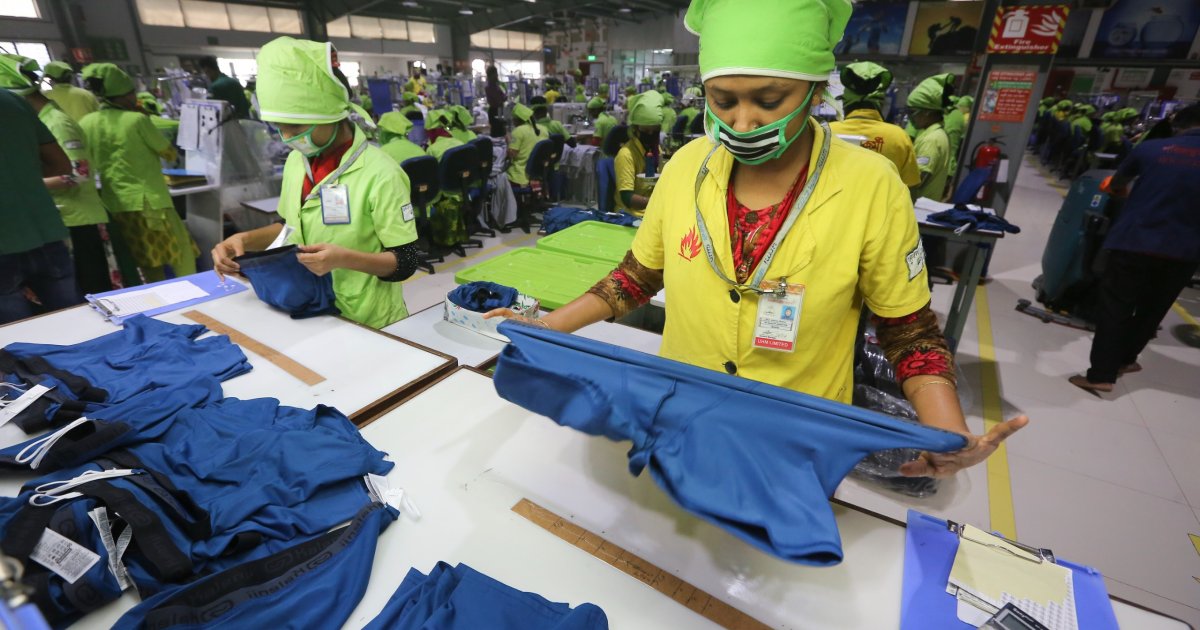Despite uncertainty in the global market, geopolitical tensions, rising production costs and pressure from competing countries, Bangladesh’s readymade garment (RMG) sector has managed to maintain positive growth in the first four months of the current FY26 (July-October).
The latest country-wise statistics released by the Export Promotion Bureau (EPB) show that RMG export earnings in these four months stood at $12.99 billion—1.40% more than the same period last year.
This growth is being seen as a “sustainable signal” for the sector amid slowing global orders, inflation and shrinking consumer spending. However, the decline in non-traditional or emerging markets is also giving some warning signs for the future.
The European Union (EU) remains Bangladesh’s largest importer of RMG.
Exports to the EU in the first four months totaled $6.26 billion, or 48.17% of total exports.
Although the growth rate is only 0.46%, experts say it is a “cautious stability”—where Bangladesh has been able to maintain demand for its apparel despite the market contraction.
Although Bangladesh has been under some pressure due to the recession, wage crisis, inflation and limited purchasing power of buyers in the EU market, this slight increase in revenue is seen as evidence of the sector’s resilience.
The US is Bangladesh’s second largest apparel market. Exports to the country in the first four months stood at $2.59 billion—19.92% of total exports.
The growth rate here is 5.14%, which is several times higher than in the EU.
According to experts, new orders for apparel imports in the US have started to increase, especially in the fast-fashion and basic clothing categories.
However, the possible changes in recent tariff policies and the uncertainty of the political situation also pose some risks for the future.
The two major traditional markets—UK and Canada—showed positive growth this year as well.
Canada fetched export earnings worth $442.27 million in revenue, and a growth of 10.84%.
From the UK, $1.53 billion came in revenue, a growth of 2.72%.
Decline in emerging markets
Bangladesh has been trying to expand its market in non-traditional or emerging markets—such as Australia, Japan, China, Russia, and South America—for the past decade.
But exports to these markets declined by 2.69% during July-October.
According to analysts, the global recession, complications due to Russian sanctions, increased logistics costs, and currency crises in some countries—are the reasons for the decline in purchase orders.
To deal with this situation, it is time to give utmost importance to market diversification.
In particular, suitable strategies should be taken to strengthen the markets of East Asia, South America, and the Middle East for the future.
Woven garments advance
Although the two main segments of ready-made garment exports—knitwear and woven—both grew, a significant increase was seen in woven garments.
Knitwear saw a 0.42% increase, while woven saw a 2.66% increase.
The relatively better performance of woven garments compared to knitwear indicates that the demand for woven garments in Europe and America is increasing again.
Although the four-month export growth is overall positive, it is seen as a ‘cautious prospect’ by those involved in the sector.
The uncertainty in the global market has not yet subsided.
Production costs, energy situation, international tariff policy, and competitor countries—Vietnam, Cambodia, and India—are moving rapidly through their new investments and technological developments.
Former BGMEA director and additional managing director of Denim Expert Limited, Mohiuddin Rubel, told Bangla Tribune: “Although the global market is gradually recovering, Bangladesh faces intense competition. Buyers’ demands are changing rapidly. Therefore, we need to diversify the market, improve product quality, and build long-term relationships with buyers.”



